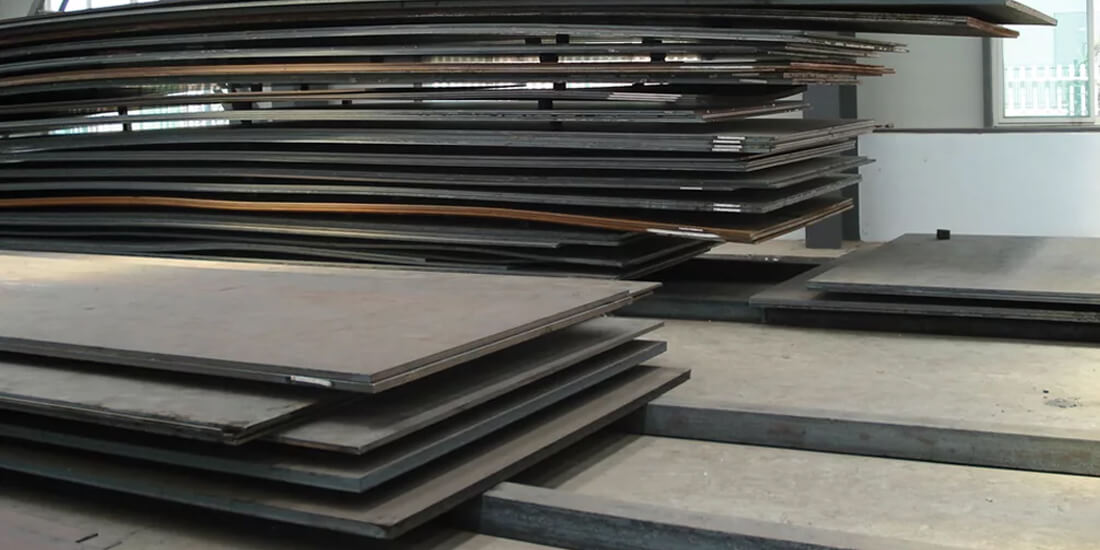S690QL is a remarkable material in high-strength steel plates known for its exceptional strength, durability, and versatility. These plates have revolutionized the construction and heavy machinery industries by providing engineers and manufacturers with a powerful tool to meet demanding structural requirements. In this article, we will explore the world of S690QL steel plates, examining their composition, properties, applications, and the benefits they bring to various sectors.
Understanding S690QL Steel Plates
S690QL plates belong to the family of high-strength, low-alloy (HSLA) steels and are specifically designed to deliver superior performance in structural applications. The "S" in S690QL denotes structural steel, while the "690" represents its minimum yield strength, expressed in megapascals (MPa). With a minimum yield strength of 690 MPa, these plates offer outstanding load-bearing capabilities, making them suitable for use in demanding environments.
Composition and Properties
The exceptional strength and toughness of S690QL plates are achieved through careful alloying and heat treatment. Key components of S690QL steel include:
- Low Carbon Content: S690QL plates typically have a low carbon content, which enhances their weldability and prevents the formation of brittle microstructures.
- Alloying Elements: Elements like manganese, silicon, and chromium are added in controlled quantities to improve strength, durability, and resistance to corrosion.
- Quenching and Tempering: The plates undergo a specialized heat treatment process involving quenching and tempering to achieve the desired combination of high strength and toughness.
Key properties of S690QL Steel plates include:
- High Yield Strength: With a minimum yield strength of 690 MPa, these plates can bear substantial loads without deformation.
- Excellent Toughness: S690QL plates exhibit exceptional toughness, ensuring they can absorb energy without fracturing under impact.
- Good Weldability: Despite their high strength, S690QL plates are designed to be weldable, enabling their use in various welding applications.
Applications of S690QL Steel Plates
- Construction Industry: S690QL plates are widely employed in constructing high-rise buildings, bridges, stadiums, and other critical infrastructure projects. Their high strength allows for lighter and more economical structural elements.
- Heavy Machinery: In manufacturing heavy machinery and equipment like cranes, excavators, and bulldozers, S690QL plates find applications in critical load-bearing components, ensuring the machinery's longevity and reliability.
- Mining and Quarrying: S690QL plates are used to fabricate equipment used in mining and quarrying operations, where durability and resistance to abrasive materials are essential.
- Transportation: The transportation sector benefits from S690QL plates in constructing lightweight yet sturdy components for trucks, trailers, and railway cars.
- Aerospace and Defense: In certain aerospace and defence applications, S690QL plates are used for their ability to withstand extreme conditions and high levels of stress.
Benefits of Using S690QL Plates
- Weight Reduction: S690QL plates allow lighter structures and machinery to be designed without compromising strength, leading to fuel savings and improved efficiency.
- Increased Safety: The exceptional toughness and reliability of S690QL plates enhance the safety of structures and equipment, reducing the risk of catastrophic failures.
- Cost Efficiency: While the initial cost of S690QL plates may be higher than that of standard steel, their durability and longevity translate into lower maintenance and replacement costs.
Conclusion:
S690QL plates have revolutionized the construction and heavy machinery industries by offering unparalleled strength and durability in structural applications. Their ability to withstand extreme loads, impact, and harsh environments makes them valuable in various sectors, from construction to aerospace. As technology advances, S690QL plates will continue to play a pivotal role in pushing the boundaries of what is achievable in structural engineering and heavy machinery manufacturing.





Comments